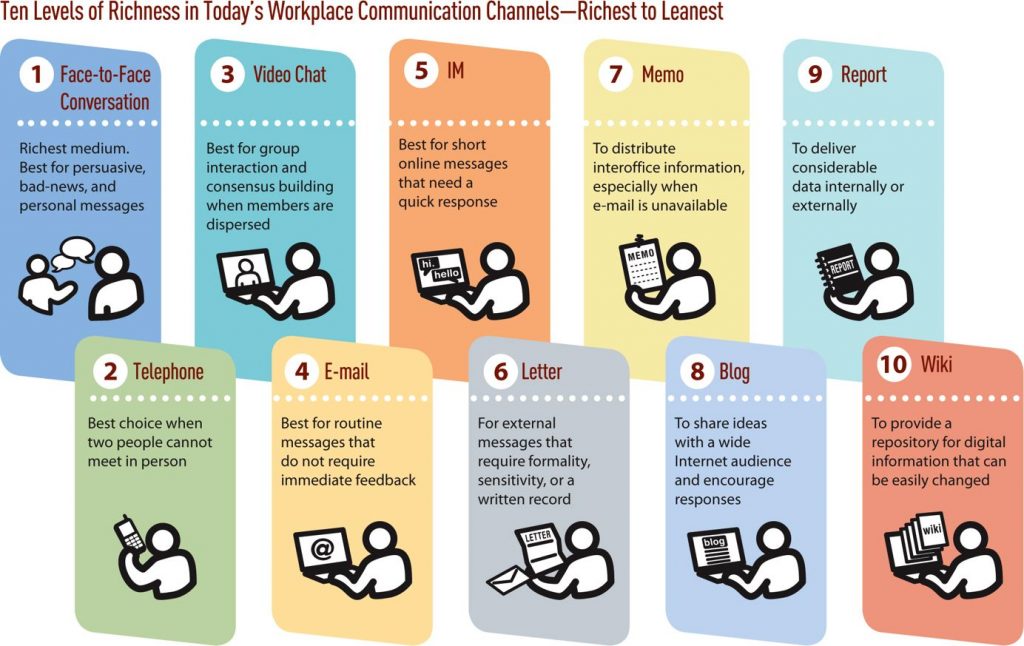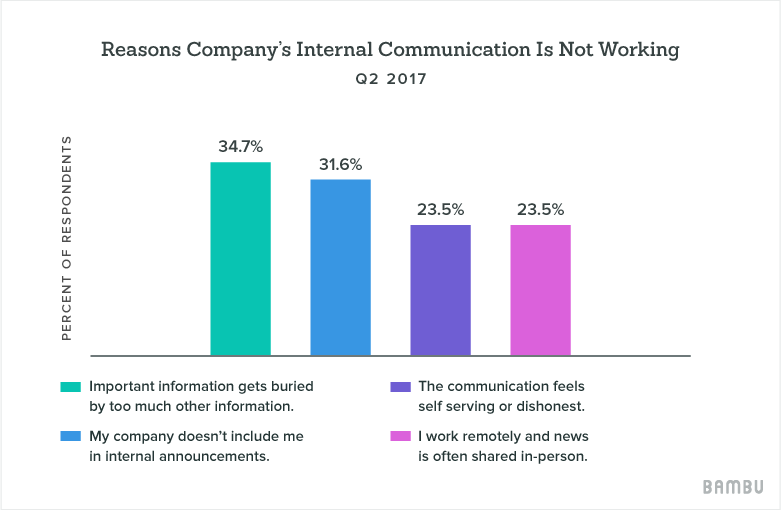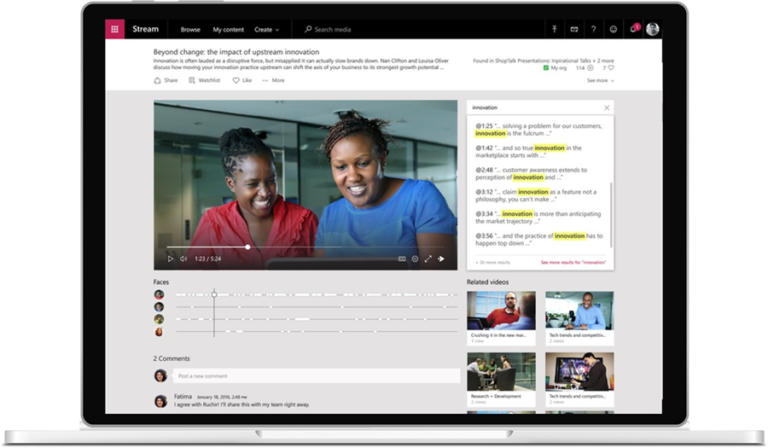The biggest difficulty when it comes to internal communications isn’t often the message itself, but rather the channels used to convey that message. In the earliest days, people just relied on verbal announcements, memos, and board postings to get the message across. Nowadays, internal communications teams are spoilt for choice when it comes to internal communication channels. The problem with that diversity is that it’s easy to use the wrong channel to get your message across.
A World of Evolving Options
The older thinking behind workplace settings birthed internal communication channels that we now call traditional. There’s the aforementioned town hall gatherings in the offices, distributed memos and flyers, and even email–which is older than you think. As the workplace itself started to evolve to include teams over vast distances—often in different countries or work-from-home setups—so did the means to communicate also evolve. Nowadays, we have more technological solutions like curated social media workspaces, a bevy of chat applications, and even internally built microsites and intranets.
All of these evolved because of two key factors. The first is that many companies simply started growing—expanding ever outward to encompass sites across the globe. The second is the realization that the tech landscape is itself changing—shifting ever away from email as the primary electronic medium. As effective as email was in the early days, it simply isn’t “fast” enough a method of communicating today. In fact, email inboxes tend to get filled and go wholly ignored. Meanwhile, a lot of other internal communication channels are instant in their means of delivery.
A World of Challenges
Now the biggest challenge of having so many options available to an internal communication team is choosing the right one to use at any given moment. Many are the companies that have leveraged too many options that their employees were simply drowned in too much information. More than that, juggling too many channels presents the very real possibility that some employees somewhere simply don’t get the message. When that happens, many problems can arise that affect the overall quality of work.
Part of the problem lies in the “excitedness” people experience over the addition of new internal communication channels. Each of these market themselves as the best with ever increasing feature sets like screen sharing, the ability to send files expediently, and even video conferencing. Each of these promises to be the “fastest” and “most effective”, so you find companies that jump from one to another without considering the actual effectiveness to their organizations.
Ultimately, the wide range of choices is a good thing for a business. Having many internal communication channels to choose from means that there’s that one channel out there that’s a “fit for you.” That’s precisely the advantage that we seek to explore and fully flesh out.
The Keys to Finding the Right Internal Communication Channels
Finding the right internal communication channels that are suited to you and your needs specifically isn’t easy, but you don’t need to feel overwhelmed. That’s because exploration and thoughtful research are always great starting points and rather necessary ones to succeed.
Try Out Popular Channels
The only way to know which channels are most effective is to try them out. But you can’t do so just haphazardly. You need to be aided first by research into which methods are popular with your employee demographics at the moment. There was a time when IRC chat was all the rage and all anyone would go for. Nowadays, you have social media and their various internal messaging features being far more popular. A good place to begin is what’s actually “in.”


Experiment Thoughtfully and Carefully
In order to make your trial periods more effective, it is necessary that you approach it scientifically. Prior to rolling out one of the new internal communication channels, make sure that you have everyone brought up to speed on its feature set, its usage, and the purpose you set out for it. You then need to create a set of metrics that will give you useful data like reach, open rates, engagement rates, and reactions. Set a long enough period of time—a month or three works—for you to run the test.
Evaluate Your Options Based on Their Effectiveness
Make sure you conduct your evaluations in an organized manner. It’s critical that your internal communications team gathers relevant data in order to help guide your research. Many of these metrics are pretty simple. For example, reach and open rates are easy enough to evaluate as they’re simply measures of how many people received the message, and how many people have actually opened the message sent to them.


When talking about engagement rates on the other hand, you have to evaluate two things. The first is the number of responses and comments. The second is the resulting employee behavior. This latter bit is a tad more challenging to measure as it is very intangible. That is why you’ll need to conduct surveys and interviews to gauge how effective your messaging has been with each of the internal communication channels that you’re trying out. Focus the surveys on these key areas:
Connection to Company Goals
This has to do with whether or not the channel used to deliver a particular message drives actions or reactions that you desire through your message. For example, did a drive towards cleanliness in the workplace in fact produce a visible cleaning up of work spaces? Did an impassioned call for increased productivity indeed result in productivity? Go beyond the quantifiable and also talk about the emotional and psychological reaction to the message.
Peer to Peer Commitment:
This measures whether or not the channel you’ve chosen has pushed for more effective collaboration. Did your employees find it easier to get their jobs done? Did they find it more efficient to work with other teams critical to their jobs? Delve into specifics when asking these questions. Again, it’s necessary to also include what changes in terms of how your employees felt or what shift in disposition might have occurred.
Developing the Right Capabilities:
Finally, you want to also gauge whether or not you made your employees feel that they’re in an environment where they can not only grow, but also thrive in their careers. If your messaging is effective, they’ll reflect that in their responses to you. It’s often as simple as feeling that they’re “in the loop” and knowing exactly what’s going on in your company. A channel that’s effective will generate these feelings.
Match Means to Message
Another tricky thing about internal communication channels is that they’re very rarely one size fits all. Chat applications might be an excellent way to convey instructions or talk directly to a team, but it isn’t as effective as sending key documents in an organized and meaningful way. Email would still be a great channel for that. Social media might be more effective for sharing media content for your organization, but it wouldn’t be as effective if your CEO wants to deliver a key message. Even as you try out different channels, you should have an awareness of what each channel is capable of handling.
In-Person
The oldest of all channels is actually one of the best options to go for. You not only reduce the possibility of miscommunication, but you also get a more honest and visible response far more quickly. Utilize this channel when conveying information that is absolutely critical to an individual employee or group. Employee evaluations fall neatly within this category, as do announcements that affect the company as a whole. This is a lot more difficult a means of communication to use if your company is spread across cities and even countries, however, so leverage it where you can, when you can, and adapt other channels like video conferencing applications to provide as close to in-person as you can when it simply isn’t viable.
Social Media & Chat
These internal communication channels are easily compartmentalized so teams can communicate amongst themselves as well as with other teams in an organization. Keeping tabs on a team hour to hour is something that these channels allowUrgent messages that need to be sent across quickly are best served by these channels in the always online world we live in. Just make sure you clearly define how it is to be used. Also, don’t use more than one platform as this can get very confusing and counterintuitive as nobody wants to have to use more than one at a given time.
Emails and Intranets
When you need to get longer messages across or need to share documents and information, these are the channels you go for. Reserve these for the sharing of business critical policy changes or announcements. In order to avoid emails going unnoticed, it’s best to only send a few at a time. As you do, you should complement the use of these with reminders and prompts sent through quicker channels like social media and chat. A quick “check your email for the latest policies to be implemented” goes a long way towards getting that email open and read.
Finally, don’t do away with printed memos altogether. Just don’t use them in isolation. Instead, use them to reinforce messages already sent through other channels. After all, it’s just as easy for information to be “lost” in other channels. So, for particularly key bits of information, it’s still helpful to have these around the office partly out of due diligence, and partly as constant reminders easily glanced at.
Getting Down to the Nitty Gritty
Having many options is always a good thing no matter how you cut it. Instead of being overwhelmed by the bevy of choices, it serves you and your company to have a thoughtful approach to discovering the best internal communication channels that fit your company and your people. If you make sure that your exploration of these channels is data-driven and considerate of who your employees are, it’s guaranteed that you’ll find the perfect mix to use.













